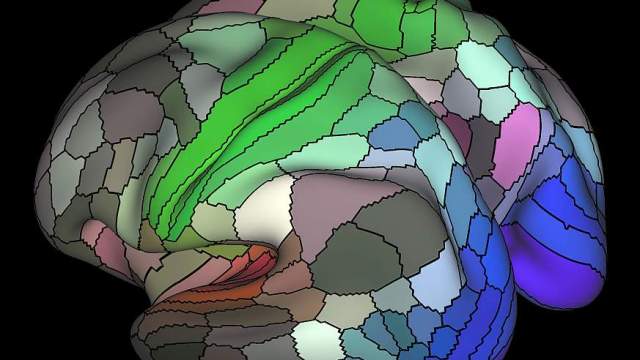Star Trek Discovery’s ‘Magic To Make The Sanest Man Go Mad’ Is A Masterpiece: Season 1 Episode 7
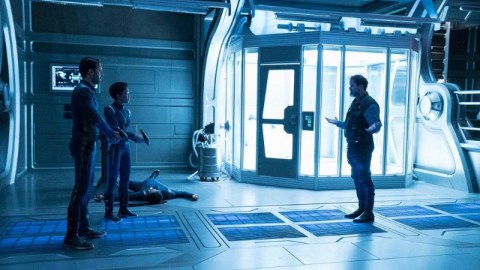
For the first time, I genuinely enjoyed the new series.
There’s been one question that’s bothered me in every episode since Star Trek: Discovery began: why would anyone want to be on this ship? Everyone is thoroughly expendable; nobody has fun; people have to fight with higher-ups all the time just to do their jobs. Yet right from the outset, we see a side of Star Trek that we rarely see, as the crew has an after-hours party. Burnham, Tilly, Tyler and more show us a personal, non-professional side of themselves that’s charming and disarming, and we learn that Burnham and Tyler like each other. Stamets has completely transformed since he’s begun using himself to power the spore drive, as his mind has truly been expanded. And it’s the crew’s ability to work together as a team while working according to their individual strengths that allows them to overcome Mudd, a time loop, and their own fears. If you haven’t been watching Star Trek: Discovery, this episode alone may be worth the journey so far.
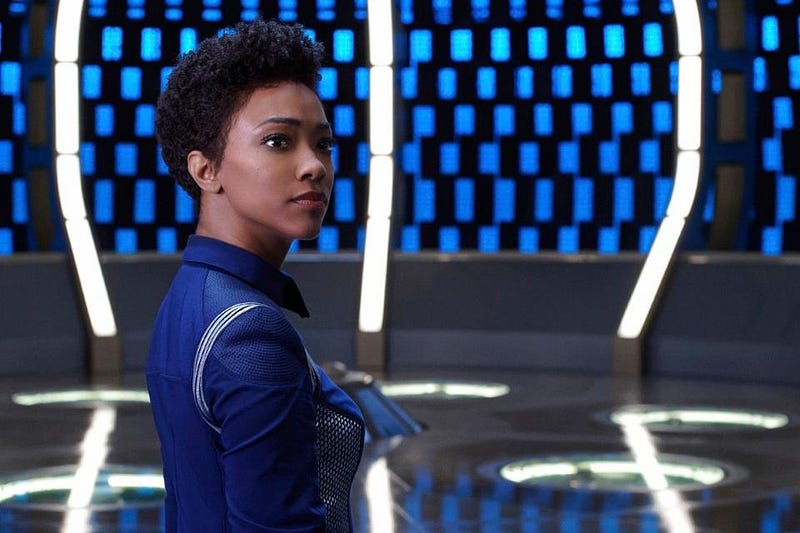
Recap: When traveling through the abyss of space, in the middle of a war, it’s important to take some time to focus on your own sanity, and a party seems like a great way to do that. (The choice of N-Trance’s Stayin’ Alive remix is great music that you imagine might still be played at a dance party hundreds of years in the future.) We get a voice-over view inside Burnham’s mind, where she divulges one of her deepest insecurities: that she doesn’t know how to relate to people. But in that, we glean that she wants to relate to not just people in general, but to one person in particular: Ash Tyler. After some awkward banter in the club — where Tyler is charming and Burnham is awkward — they both get called to the bridge for professional reasons, where Tyler jokes that she’s been saved from a social interaction. On their way, they run into Stamets.

When we saw Stamets last week, he had clearly been affected by the mycelium spores and the alterations he made to his body with the Tardigrade DNA. His personality had changed; he had become sillier and full of jokes; his eyes were severely dilated. This now appears to be permanent state of affairs, but he’s also additionally extra-perceptive. After running into (literally) Burnham in the hallway as she and Tyler make their way to the bridge to deal with the science emergency (the space whale), they have an exchange, and he notices something’s up between them.
Stamets: “By the way, what’s the deal with you two?”
Tyler: “Specialist Burnham would hate to be inappropriate.”
Stamets: “What do you mean by that? What does he mean by that?”
They like each other, and Stamets knows it before anyone (other than Tilly, whom Burnham told). They encounter an endangered space whale that feeds off of alpha particles, and are required by regulation to transport it to a location where it will have a chance to mate. But Lorca and Tyler’s old cellmate, Harry Mudd, is inside this space whale, shoots a bunch of crewmembers, and blows up the ship.
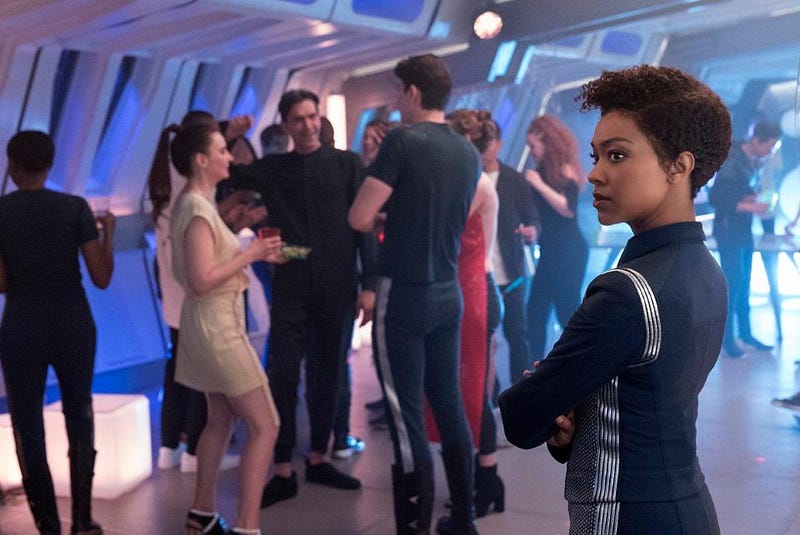
This segues into the well-worn trope of a time loop, where characters are forced to repeat the same period of time over and over again. Mudd gets one step closer, each time, to his ultimate goal: taking control of Discovery, learning to use the spore drive, and selling the whole shebang to the Klingons. The crew has no memory of previous “loops,” since Mudd is making this loop happen with the help of a time crystal, which is strapped to his wrist. As long as Discovery is destroyed in time, the crystal never reaches the end point of the loop, and the whole timeline resets… except for Mudd, who gets to retain everything he’s learned along the way.
Well, except for Mudd, that is, and also Stamets. As the loop repeats, and Burnham and Tyler make their way to the bridge, but Stamets runs after them and interrupts them. They simply think he’s gone nuts, until he tells them about the space whale, which is such an improbable prediction that it gives Burnham significant pause. Later, she comes to realize that Stamets knows what’s going on… and that he’s the only one.
Burnham: “Well, how are you able to exist outside of the time loop?”
Stamets: “The tardigrade is a multidimensional creature, so it must be a side effect of combining its DNA with mine.”
Mudd keeps failing to learn the secrets of the spore drive, so he keeps executing Lorca, torturing various crewmembers, and blowing up Discovery before the time loop ends, confident that eventually he’ll figure it out. (And yes, in true Groundhog-day fashion, he starts to find the whole thing tiresome, but it makes a great montage.)
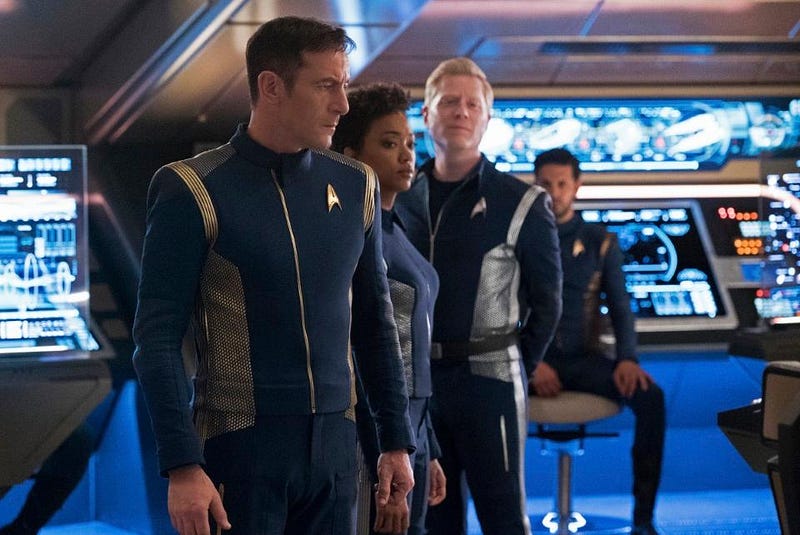
The breakthrough for the Discovery crew comes when Stamets finds a way to reach Burnham: he gets her to confide a secret in him, something that he shouldn’t know that will immediately make her trust him. She’s never been in love… and now Stamets not only knows, but he knows that’s changing before his very eyes. When he explains the whole thing to Burnham at the beginning of a reset, she starts getting information from Tyler immediately… well, after she gets past her own awkwardness, and Stamets teaches her how to dance. It’s a sweet, zero-tension moment between friends of opposite gender; something rarely seen on television but so important to real life. Stamets tells her she’ll do better on the next go-round, and she does.
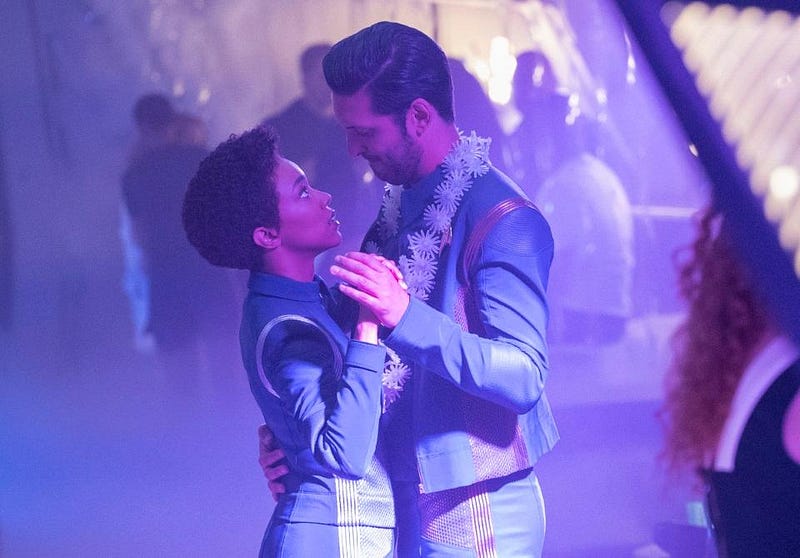
She dances with Tyler, they figure out that time is repeating, and instead of Stayin’ Alive they get to slow dance and kiss… and Burnham learns some vital information about robbing a Betazoid bank that allows them to eventually figure out how to get one step ahead of Mudd. The key is that they know information about Mudd that he doesn’t suspect the crew can learn. He iswearing one of those crystal things, and even when he figures out what Stamets is all about, he fails to put that last piece together.
Finally, Stamets decides to end the loop, and tells Mudd that he’s the missing piece of the spore drive. Tyler is dead in this time loop, and Lorca’s in the brig. It seems like a very dark timeline to end in. But Burnham divulges who she is, too, and Mudd learns just how valuable he is. Burnham counts on Mudd’s greed and opportunism, and on the fact that he’ll want to sell her to the Klingons as well. She commits suicide by dark matter, hoping Mudd will reset one more time. He does, just before the time loop ends, and they get one more chance.
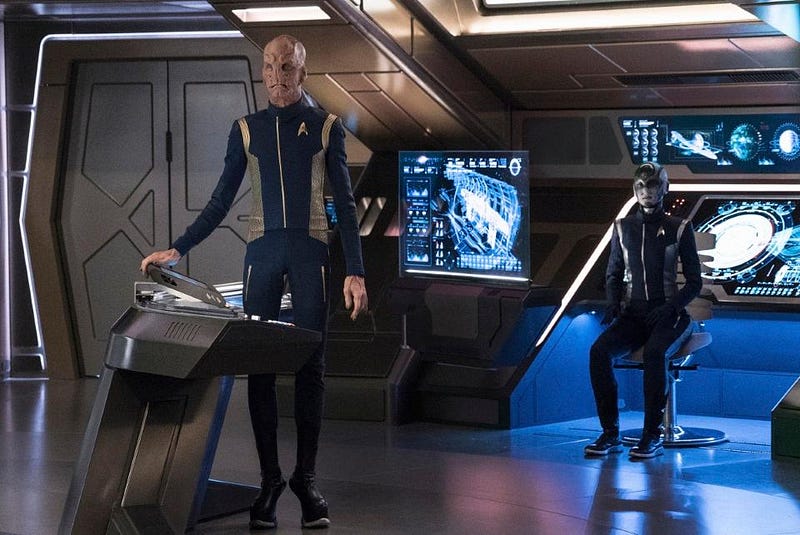
It all comes together as planned: they trick Mudd into thinking he’s in control, and pretend that Discovery, Stamets, and Burnham will all go over to the Klingons, turning the tide of the war, making Mudd rich, and the only concession is the rest of the crew gets to escape. Mudd even says, “don’t try and con a con man,” as though he’s onto them, and is wary of exactly this type of ruse. But instead, Mudd was never in control, and Mudd goes over to Stella and her dad instead. It’s the end of the line; his ruse is busted, and restitution to the Federation is paid. It’s a great moment in television: when you outmaneuver a con artist, and con him yourself. Picard was a master of this; this time, the entire crew of Discovery works together to make it happen. It’s incredibly satisfying.
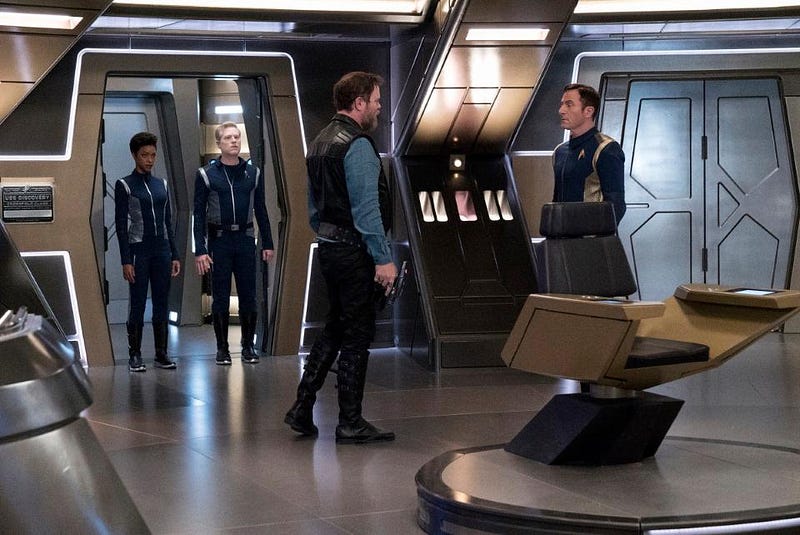
The Science: The idea of a living space creature that feeds off of astrophysical energy might be a far-fetched one, but it’s not out of the realm of possibility. While most primitive living creatures, including bacteria and the most primitive plants, get energy from photons from the Sun directly, it’s not physically impossible to get energy from other sources, such as alpha particles. Alpha particles are normally low-energy collisions: when you get hit by an alpha emitter, it generally gets stopped by your first outer layer of skin cells. If a creature had evolved, say, underground, in an alpha-rich environment, it could have harnessed that energy over billions of years. Although this is speculative, it’s good science fiction: physically/biologically plausible, an undefined mechanism, and a good plot device.
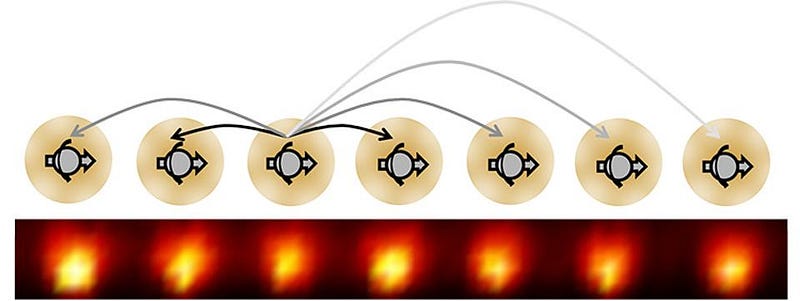
Time crystals: are they real? Actually, yes! Yes, time crystals are a real thing. But it doesn’t mean that time is crystallized, and it doesn’t mean you can control the passage of time with a crystal. The property of a crystal that makes them interesting is that they have a lattice pattern that repeats in space; crystals are a solid, ordered structure. There are many different quantum states a particle can occupy, including the ground (lowest-energy) state and multiple excited (higher-energy) states. The whole idea of a time crystal is that you can oscillate between lower-and-higher energy states and wind up with the same quantum configuration that you started with.

This is true, possible, and real, if a very explicit number of conditions are met. You need some external driving force (like a pulsed laser) to force those oscillations, which are otherwise impossible for the same reason perpetual motion is impossible. You need the crystal to have specific properties as well, and to avoid problems like runaway heating. We’ve created them and it’s incredible… but it has nothing to do with a time loop. But this is a plot device I’m completely fine with; it feels right at home in the Star Trek Universe. You want to work a hidden ship, a hidden power source, and a sick space whale into there as your explanatory devices? For this episode, at least, it makes the show work.
The dark-matter-death capsule is pretty cool, and relies on only one assumption to work: that at some level, dark matter is manipulable and can interact with normal matter if dealt with properly. It’s a possibility that’s absolutely considered in the literature today, and might be how the physical Universe actually behaves. It would be one of the holy grails of physics and astrophysics if true, and I really like the use of this plot device here.

And finally, there’s Stamets’ explanation of being a multidimensional creature now that he has tardigrade DNA in him. Well, if the tardigrade is a multidimensional creature, and you’re granted multidimensional powers (or even access to one additional spatial dimension), you would become as powerful as a god. Think about what you can do to a creature that’s confined to live on a two-dimensional surface: a piece of paper. With just a pencil and an eraser, you could create or destroy anything in the entire 2D Universe at will, and they’d be powerless to stop you. Stamets gains only the ability to remember what happened in all the different versions of the time loop, a fun play on the parallel Universes trope. If you accept that this is how reality works, and that Stamets can exist in multiple dimensions at once, the “memory” leap almost seems mundane. Also, can I have a hit of that tardigrade DNA?
Right and wrong: When we first met Mudd, there were many people questioning Lorca’s unethical decision, while escaping with Tyler, to leave Mudd on board the Klingon ship as their prisoner. Although I wrestled with the moral ambiguity of it, I could see the pros of that decision, as well as the justice and the practicality inherent to it. This time, Mudd is looking for his revenge… kind of. It’s the most opportunistic sort of revenge where the repeated murderings of Lorca and the destruction of the USS Discovery feel enjoyable for Mudd, but also give you the impression that he’d rather succeed at his mission. Yes, he’s clearly in the wrong, but he’s in the wrong the way an opportunist and a sociopath is in the wrong, not the way a stone-cold killer is.
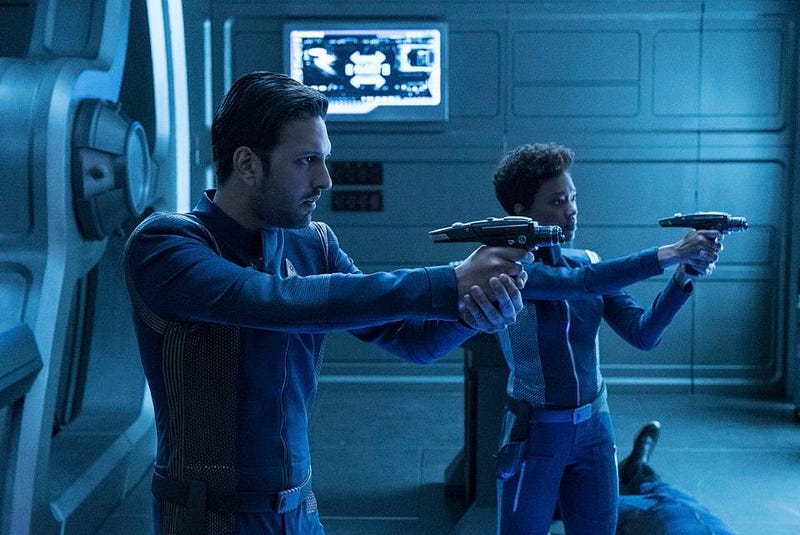
We also see the evolution of Burnham, as she incrementally discovers more and more of her humanity. While it’s difficult to imagine that seven years aboard the USS Shenzou didn’t provide her with any opportunities for socialization, it’s not so hard to imagine her completely immersing herself in her work and studies. I went through graduate school, and there were quite a few people I knew who I’d describe as all-work all-the-time, and Burnham could have been one of those. But Tilly, Tyler, and even Stamets seem to be drawing her out of her shell in a way she isn’t expecting. Her decision to sacrifice herself on the hunch that it will save Tyler, Lorca, and Discovery is one of the moral “bets” I think can be a great hallmark of Star Trek. They nailed it here.
Stamets has arguably the most interesting arc here, as he’s the only one with a memory of previous events. Yet his was of affecting change isn’t to gather all the information he can himself and play the hero, as so many others would choose, but rather to recruit those whom he needs most — Burnham and Tyler — to do what they’re best at. It’s a stellar example of cooperation among a tightly-knit crew that trusts each other, even when things don’t make complete sense. It was a beautiful thing to see.
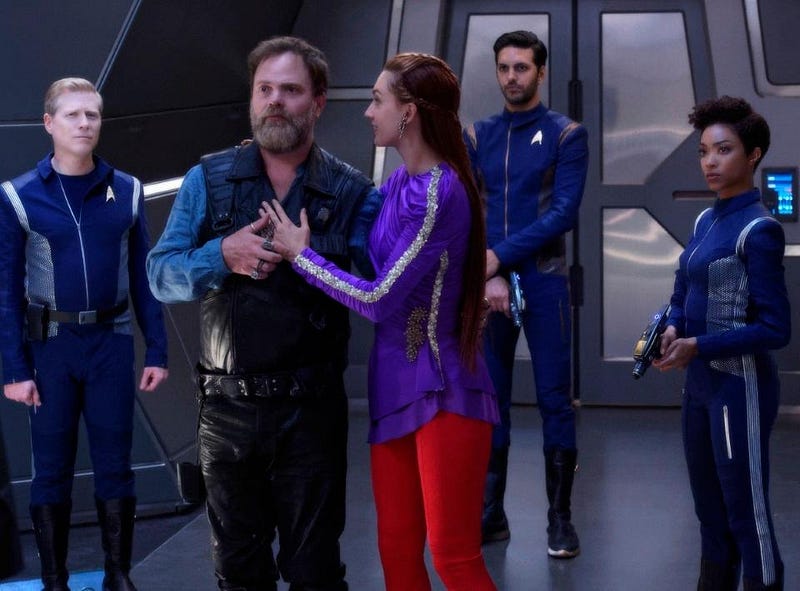
Finally, the ending of Mudd’s saga, where he’s betrayed and outsmarted at every turn by the Discovery crew; where he’s forced to reunite with Stella; and where Stella’s very, very rich family offers to make amends to the Federation, works out a little too nicely for my tastes. But it is satisfying to see Mudd get a comeuppance without having his life destroyed. It’s an incredible alternative-to-prison or other form of punishment, and something that’s become a theme on Star Trek: Discovery, as this is exactly what’s happened to Burnham, as well as (arguably) to Lorca as well. This episode is about teamwork, about trust, and about mercy.
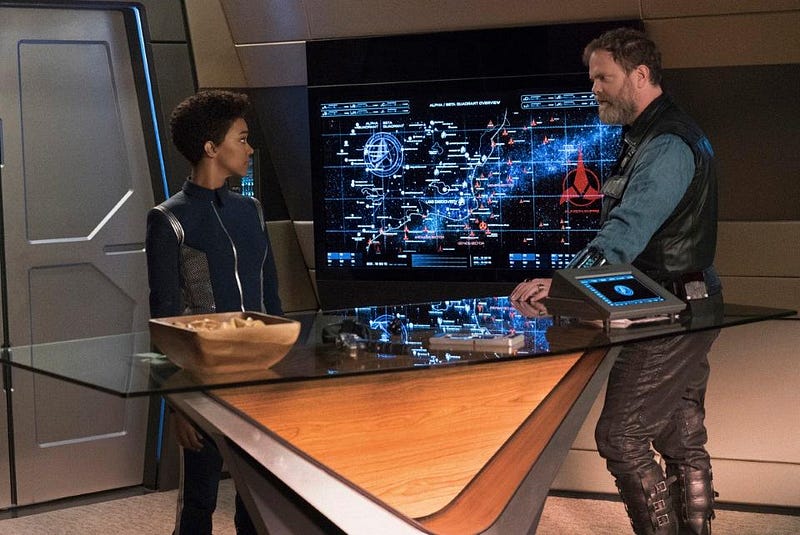
Conclusion: Far and away, this is the best episode of Star Trek: Discovery I could have asked for. By abandoning the serial nature of the plot, the show freed itself to take on a story in an unexpected way. The time loop is such a well-worn trope in science fiction that I just glossed over “time crystals” as the explanation and said, “ah, they don’t know how it works but it doesn’t matter, because they’re not even the ones using it.” The effects were interesting, but most interesting was the way that this device led to a great story that brought out interesting facets in the characters.
For the first time, I really enjoyed watching an episode of Star Trek: Discovery, from end-to-end. Only after it was over did I even have the afterthought, “Hey, I wonder what’s going to happen to Admiral Cornwell?” The episode was engaging, the characters were interesting and relatable, and they got out of a jam not by using some futuristic tech device, but by outsmarting and outmaneuvering a con man who had taken control of the most powerful ship in the Federation. In some ways, it’s the most hopeful episode of Star Trek the world could have asked for as we near the end of 2017.
Ethan Siegel is the author of Beyond the Galaxy and Treknology. You can pre-order his third book, currently in development: the Encyclopaedia Cosmologica.





